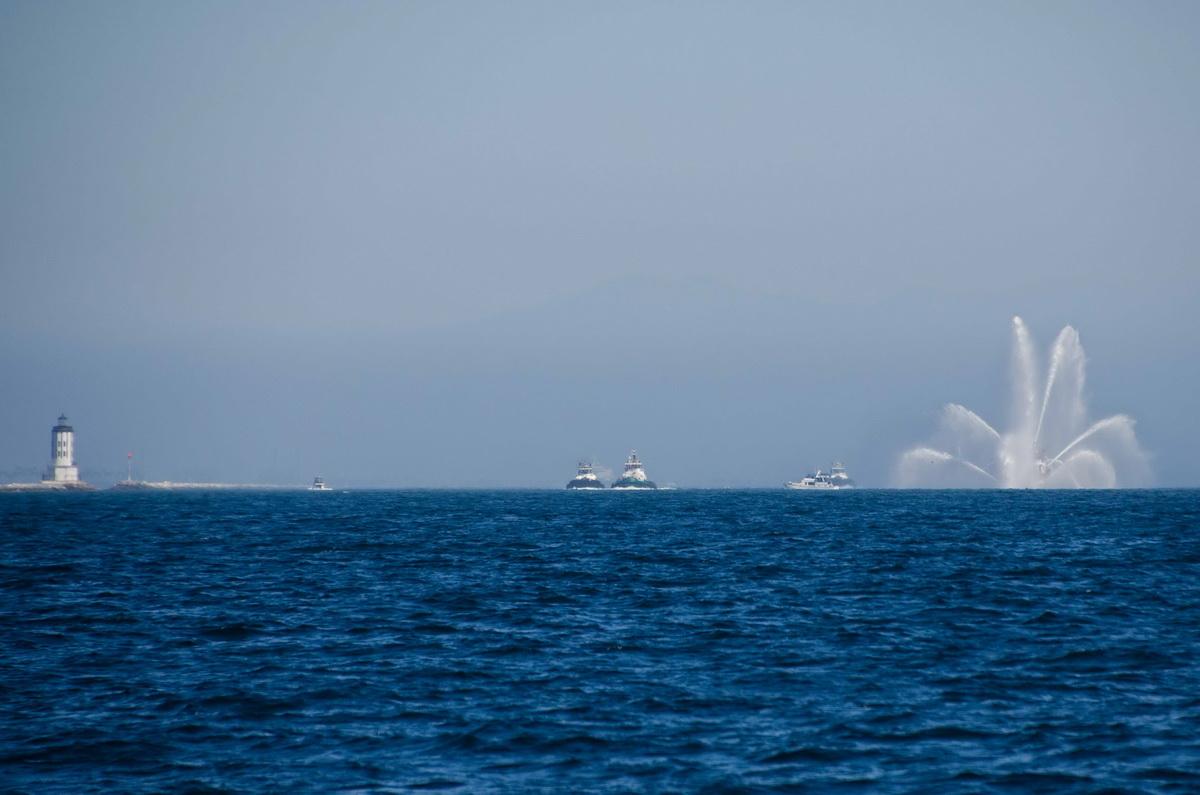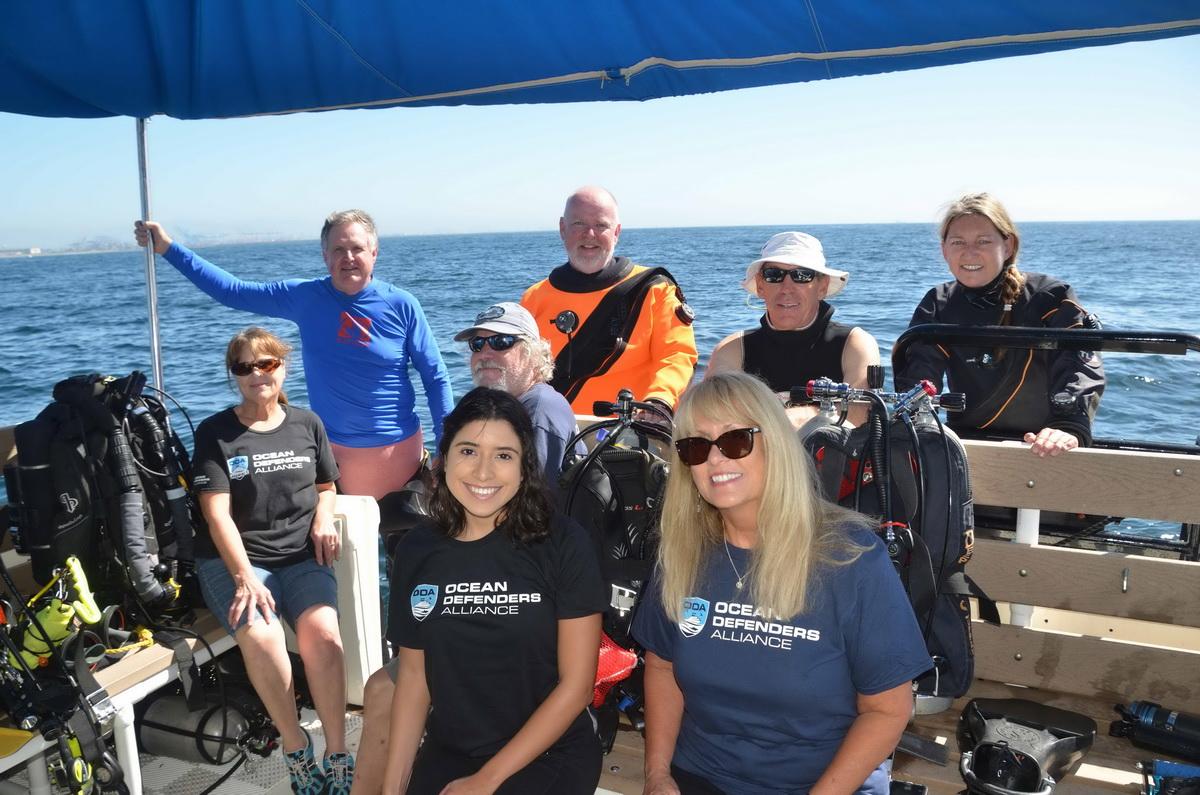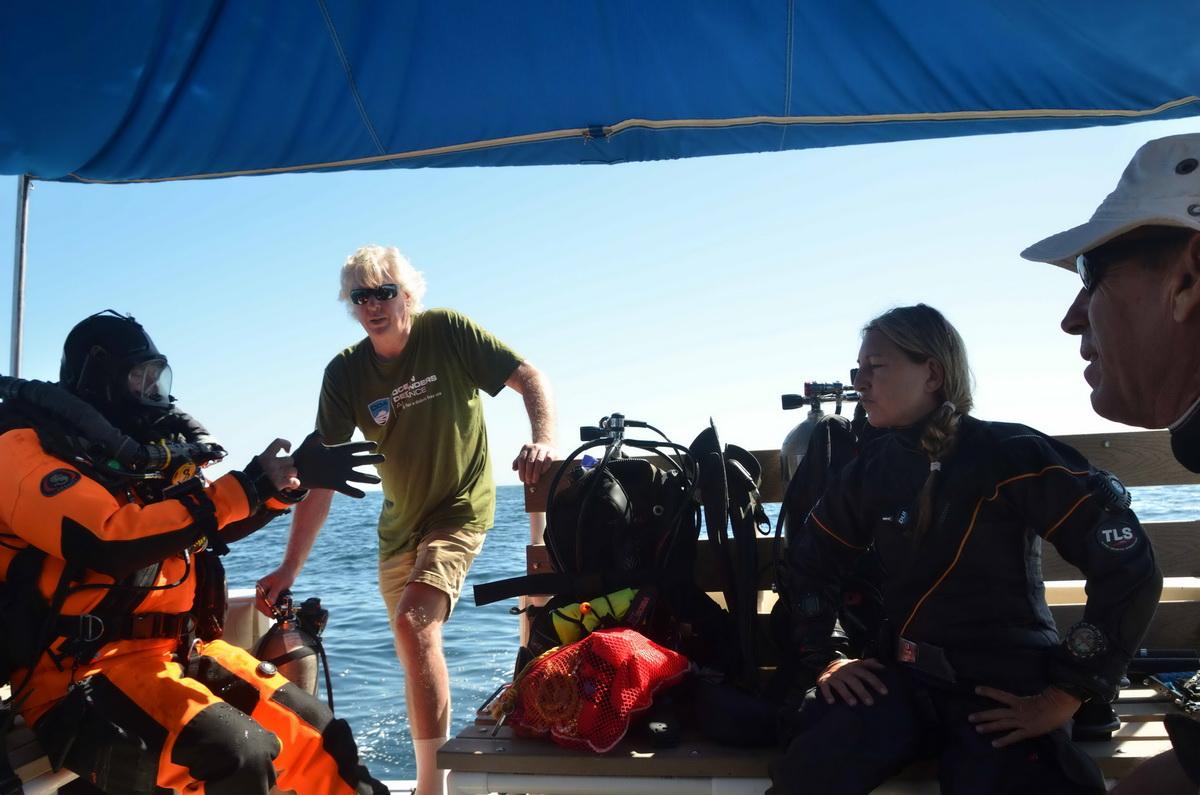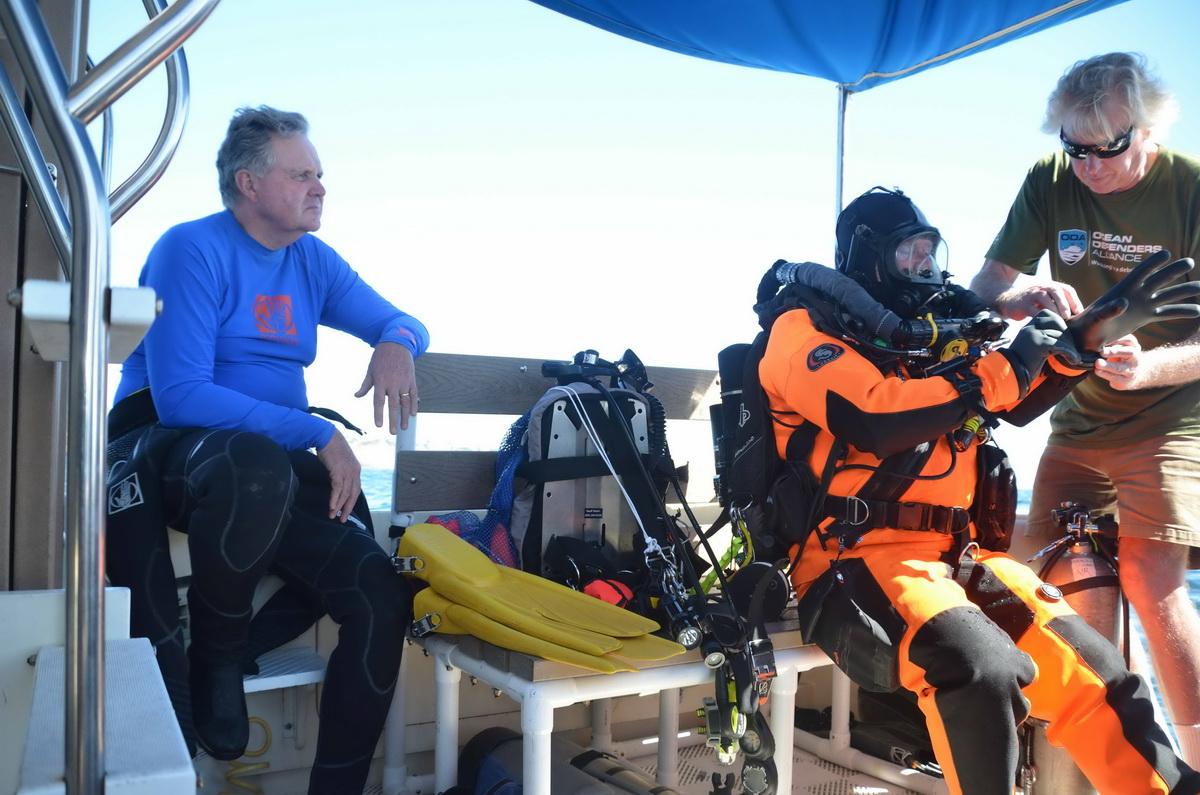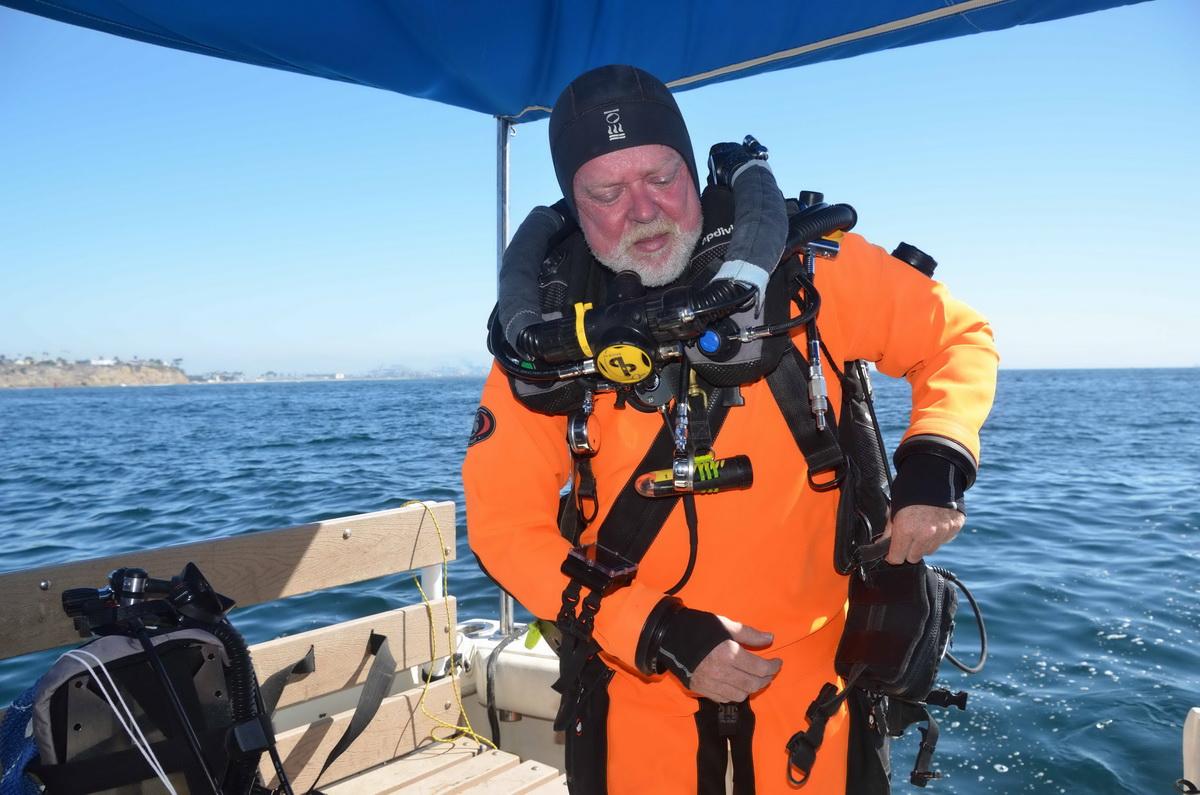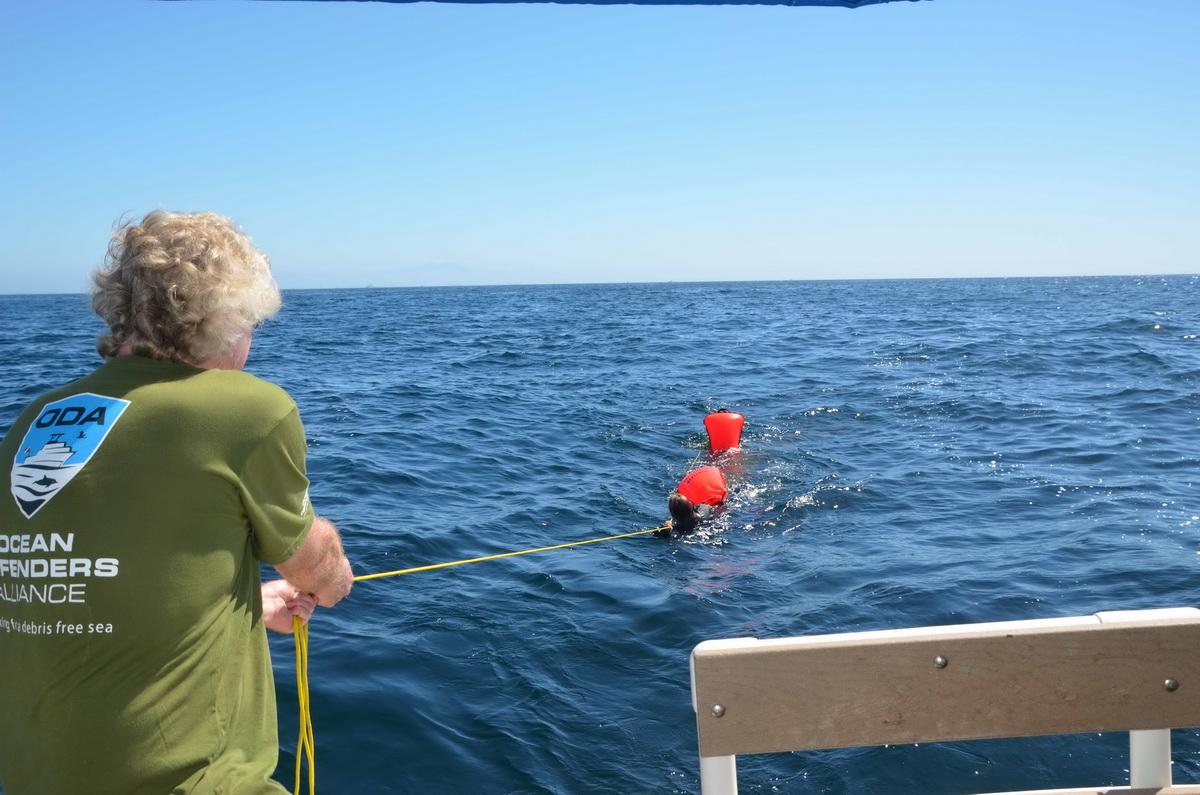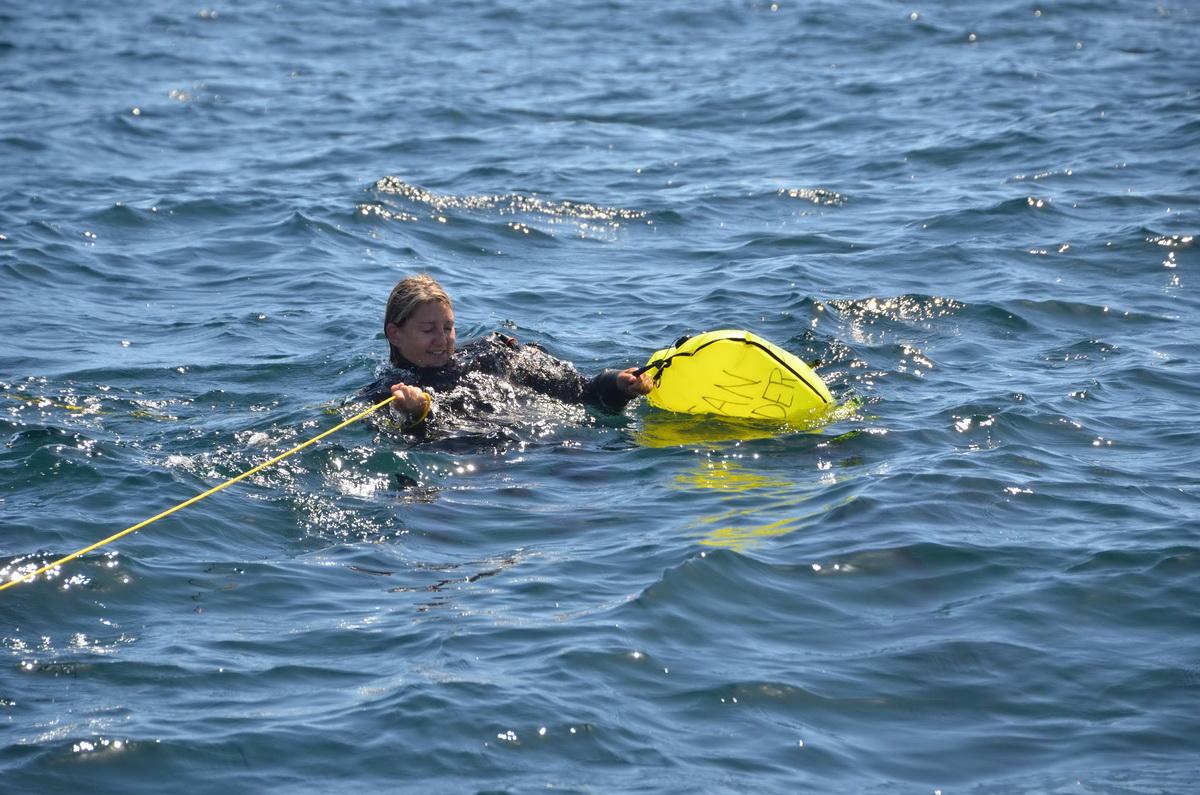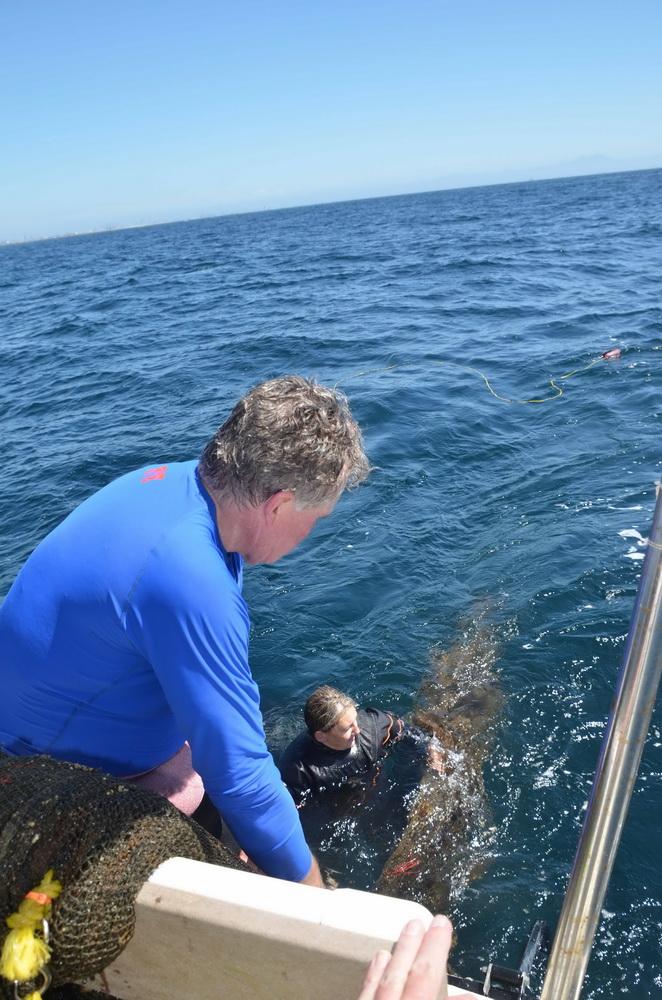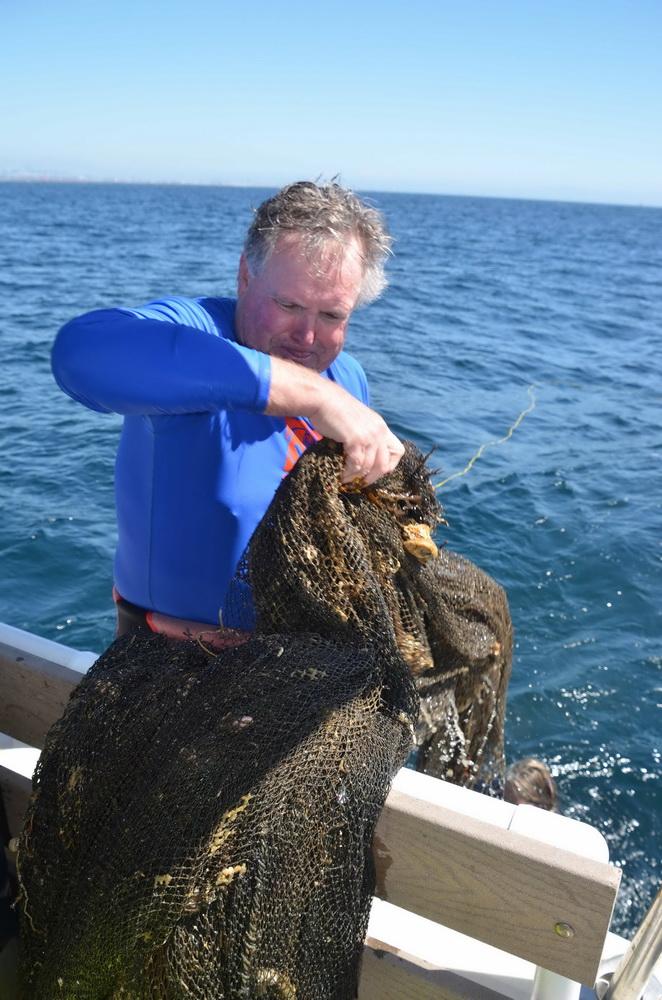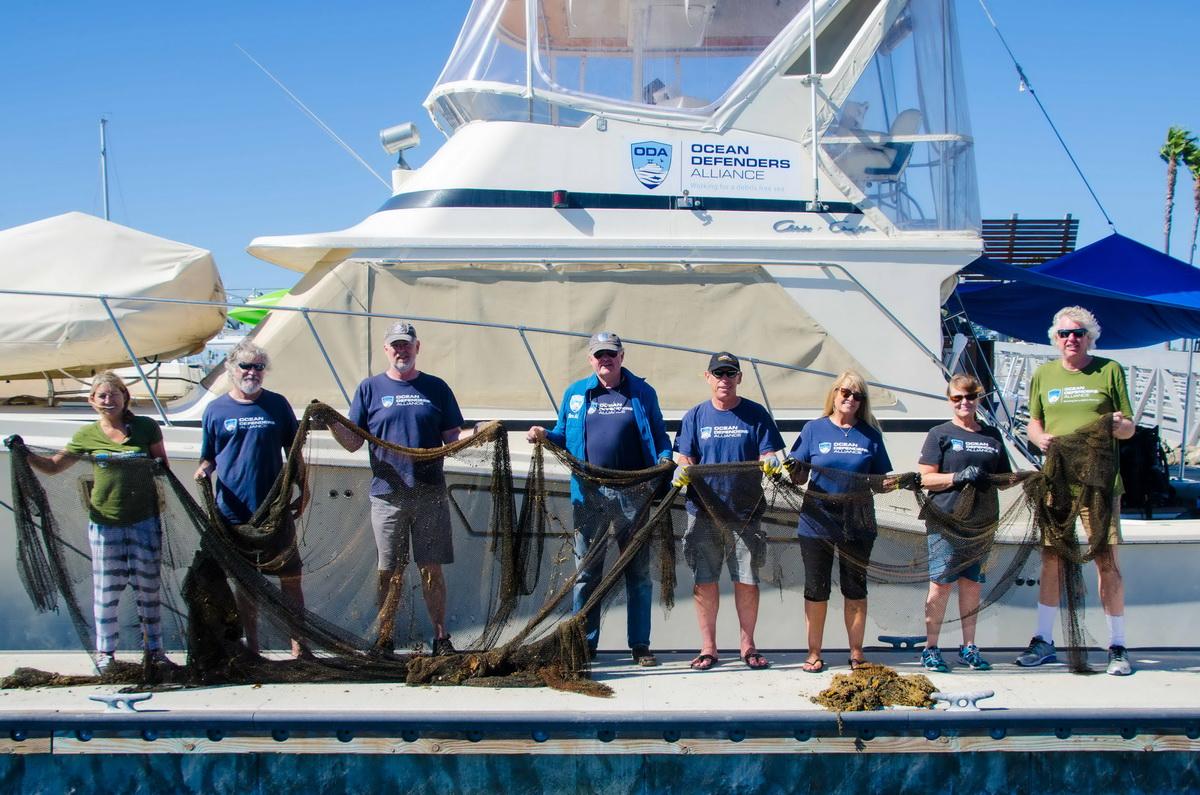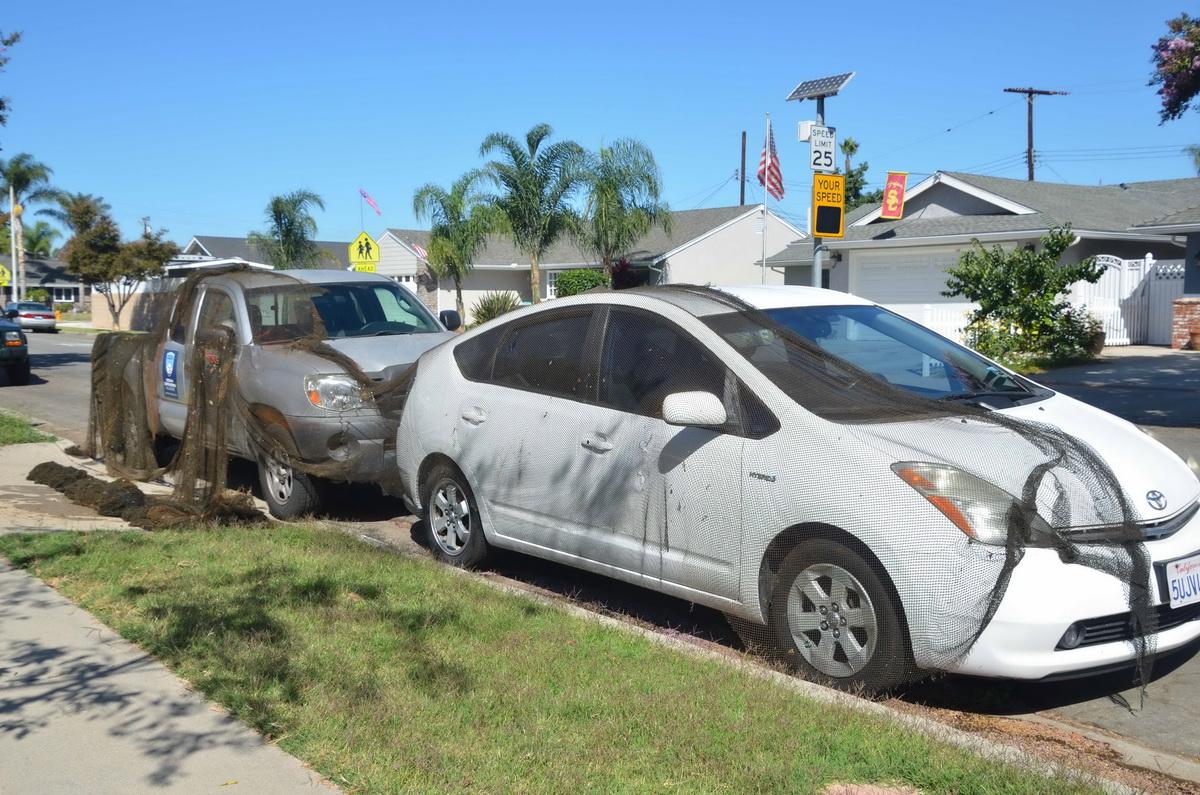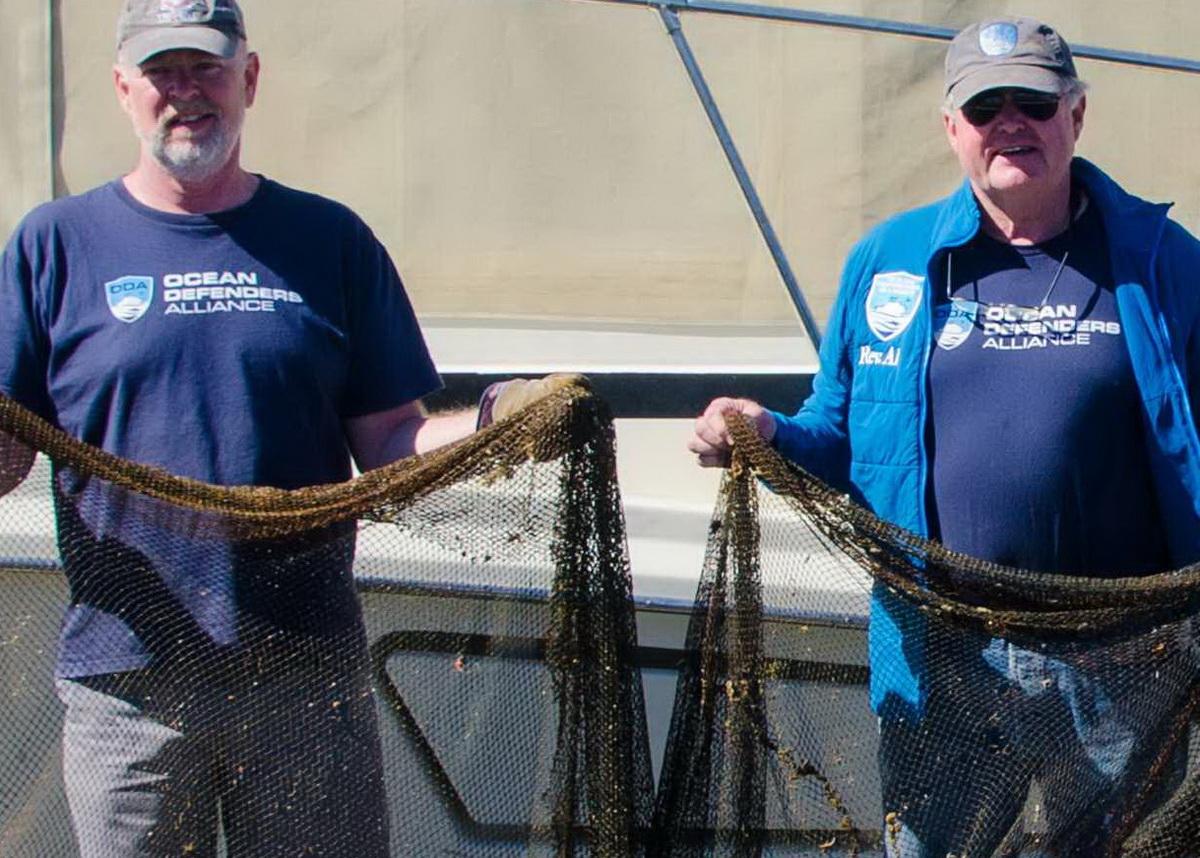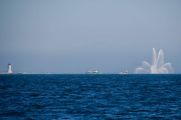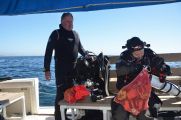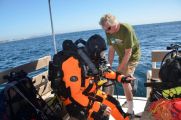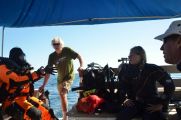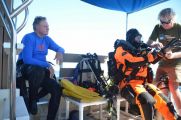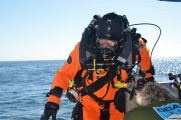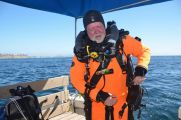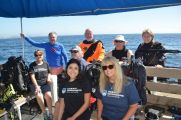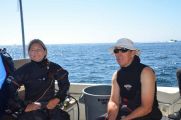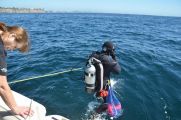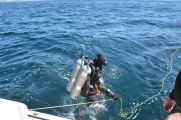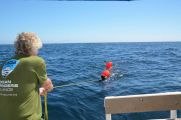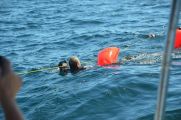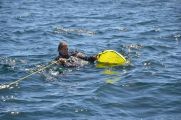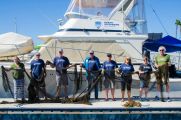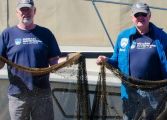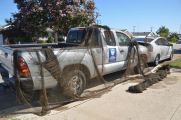By Founder and President Kurt Lieber
You can’t say that ODA’s volunteers don’t have that “stick to it” ethos.
We headed out from our slip in San Pedro to make our third visit to an artificial reef about three miles off the coast of Palos Verdes, Sunday, September 16th.
As we were heading out of the Los Angeles (LA) Harbor and were passing the lighthouse called Angels Gate, we could see a large flotilla of vessels from the LA Harbor Fire Department running through some emergency drills. They had their pump boat shooting water 100 feet in to the air!
Impressive as that was to see, the oceans had some moves she wanted to show us as well…
Great Group of Ocean Defenders
The volunteer divers for this outing were: Kim Cardenas, Al Laubenstein, Geoff Walsh, and Mike Wynd. On deck were: Jeff Connor, Lisa Davis, and newcomer Irene Heath. Great to have you with us, Irene!
Also onboard was Maria Garcia. Maria is a film student at the University of California, Northridge. She wanted to tag along and become more informed about how we operate. For her finals project she wants to produce a short documentary about ODA, but has to make a pitch to her professor. The film students have several projects that they want to cover, but only a few will be selected by the professor. Hope we make the cut! Best wishes for success to Maria.
Continuing to Clean the Artificial Reef
As you may know, we’ve been working on this artificial reef for several weeks now, and we’ve been making steady progress. But because of the depth—90 feet—the divers only have about 20 minutes to get the work done and then have to come back up due to safe diving limits.
Knowing the limited bottom time they have, I asked Mike Wynd if he could come out and give this phase of the project some of his invaluable time. Mike uses a re-breather system that allows him to stay down for up to hours at a time. He agreed to come along, and wow did it pay off!
As Mike was getting into his gear, we all marveled at how much equipment is required for these re-breather systems.
Oh my word, just look at all the contraptions he is carrying! Because of the cold waters we have here in California, he has to wear a drysuit.
Drysuits are great for keeping you warm when you are in the water, but while you are suiting up, the body starts to overheat because the heat is trapped inside the suit. You can see here that Mike can’t wait to get in the water and cool down a bit.
Safety First at ODA
Our plan was to have Mike get in the water first and then have Kim, Al and Geoff descend a few minutes later. As soon as Mike jumped in, he quickly got caught in a ripping current that was blowing by us. It was like a river was rushing past us!
We immediately threw him a line to hold on to. Despite all his efforts to kick his way to the bow so he could descend down the anchor line, he couldn’t make any headway, so Jeff “towed” him up to the bow. After catching his breath, he dropped down, using the anchor line as a guide down to the bottom.
After about 10 minutes, Kim jumped in. She held on to the tow line with all her might, as Jeff towed her up to the anchor line. Soon Al and Geoff were towed up there as well.
All three of them descended. But within a few minutes Kim as back at the stern. She canceled her dive because of the current. She was concerned that if she couldn’t get back to the anchor line that she would drift away from the boat. This could be really dangerous, especially if there were boats passing by that didn’t see her in the water. Good call, Kim!
Removing Nets – Making the Ocean Safer
Al and Geoff continued on their way down and met Mike at the bottom. Turns out that the ripping current stopped once they reached about 30 feet down. All three of them started working on attaching lift bags to the nets that they found and then began cutting away.
Pretty soon we saw lift bags popping up. Within seconds the bags were floating right by us on the boat. They were almost within our reach, but not quite. Kim quickly grabbed her fins and jumped in the water to see if she could intercept them before they started heading to Hawai’i.
She held onto a long line we had laid out behind the boat, known as a drift line. That way we could haul her back to the boat if the currents tried to sweep her away. It worked like a charm, and as soon as she had hold of the lift bags, we slowly pulled her back to the boat.
As the lift bags kept coming up, Kim repeated the process.
We were sure glad she was available (and not down below) to take care of this important debris-retrieving task!
ODA is Anchored to Our Mission
Mike ended up staying down for almost two hours…TWO HOURS! When he finally got back onboard we were all relieved. Conditions now were far worse than when we started the dives.
But he had some news for us…Because the current was so strong, he had moved the anchor to make sure that the boat didn’t get pulled away from the wreck, AND leave Mike behind. He had wrapped the anchor chain around the structure of the wreck, but now someone was going to have to go back down and un-wrap it.
Kim, Al and Geoff agreed to give it a shot. And after Jeff towed them up to the bow, they headed back down only to have Kim come back up and admit that the current was too strong for her to dive safely. No worries Kim, it’s ALWAYS better to be safe than sorry.
Al and Geoff successfully got the chain off the wreck and were actually able to send some more net up to the surface before they came back up. Talk about putting in the extra effort!
Squid Nets: Designed to Kill
As we headed back to our slip, Mike was lamenting that all the net that came up—which we thought was a lot—didn’t look so big in the trash can we had put it in. So, when I got home I weighed it and laid it out for all to see. It weighed almost 200 pounds, and as you can see here, it would easily engulf my two cars.
For the most part, these nets are from the squid fishery. They are made out of nylon and the scientists predict that they will last 650 years before they deteriorate. All that time they are in the water they have the potential to kill untold amounts of animals.
As you can see above, the nets are tightly woven so the openings between the nylon are very small; that means hardly any ocean life can escape once caught in the net. Thankfully, the nets we retrieved will kill no more…
Kudos go out to the entire crew: We made significant progress towards getting nets off of this artificial reef, but there is still at least twice as much that we need to go back and remove. And you can trust me and the crew on this: WE WILL BE BACK!
You’re Invited
Will you help us get there? You become part of the greater ODA crew when you put fuel in our boats’ tanks and keep us out on the water doing what we do best! We’re thankful for your donations and partnership for clean oceans.


